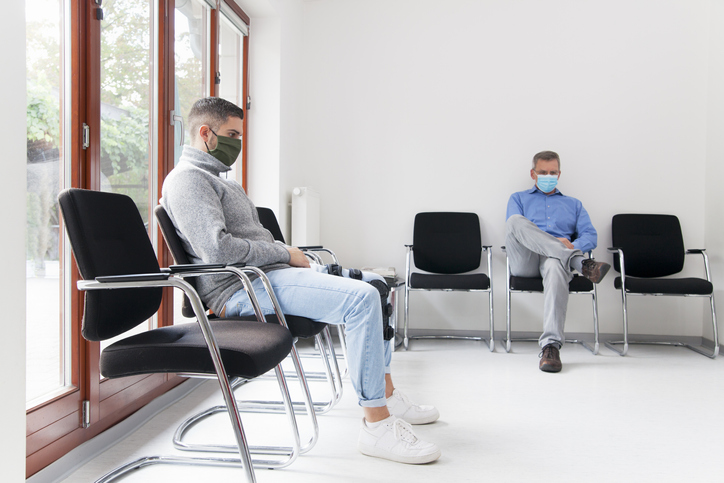The Joint Commission recently updated its FAQ on environmental risk assessments in non-inpatient Behavioral Health settings.
Their guidance is essentially the same as back in 2018. However, it’s worth reviewing closely since surveyors frequently cite this issue in non-inpatient BH settings.
Non-inpatient Behavioral Health Settings: What’s included?
Non-inpatient Behavioral Health settings include programs such as residential, partial hospitalization, intensive outpatient, day treatment, and outpatient settings. TJC does not require these settings to be ligature resistant. (See details below.)
Environmental Risk Assessment: What’s Required?
National Patient Safety Goal 15.01.01.01 EP 1 in the Behavioral Health Care & Human Services standard makes it clear that non-inpatient BH programs must conduct an environmental risk assessment.
Specifically, it states: “Noninpatient behavioral health care and human services settings and unlocked inpatient units do not need to be ligature resistant. The expectation for these settings is to conduct a risk assessment to identify potential environmental hazards to individuals served, identify individuals who are at high risk for suicide, and take action to safeguard these individuals from the environmental risks.”
Thus, when surveyors review these settings, they expect a documented environmental risk assessment. They typically request that on Day 1 as part of the Document Review.
A thorough environmental risk assessment should list the specific risks you’ve identified. It should also document the decision you’ve made about each risk. For example, did you decide to eliminate the risk? Did you decide to mitigate it somehow?
Again, TJC does not require these settings to be ligature resistant. As a result, there may be some environmental risks you identify but don’t eliminate such as door hardware.
In any case, NPSG 15 requires you to educate staff about the risks you’ve identified. The goal is for staff to be aware of these risks, particularly in the event a patient does become suicidal in that setting.
Policies and Procedures for Patient Safety
The updated FAQ also reiterates that these non-inpatient settings must have policies and procedures regarding how to manage a client who begins to exhibit a suicide risk. These policies and procedures should cover the following topics:
- The process for evaluating the client’s suicide risk (who, where, etc.)
- The process for transitioning the client to a higher level of care
- Staff roles and responsibilities in these processes
Survey Findings
As we mentioned, TJC surveyors scrutinize this issue when surveying non-inpatient BH settings. Here’s a sample of some recent survey findings:
“The Mental Health IOP had not conducted an environmental risk assessment to identify features in the physical environment that could be used to attempt suicide or self-harm”
“Staff in the residential program were not able to consistently describe how they would handle a patient who became suicidal. The program did not have a written policy or procedure on this topic.”
Survey Readiness
Finally, what’s the best way to be survey-ready in this area? First, if you haven’t completed an environmental risk assessment for your non-inpatient areas, get that done. If you have one, review and update it if needed to reflect any new safety risks in the environment.
Next, make sure you have a policy that addresses how you’ll manage patients who decompensate and need further evaluation for their suicide risk. Train staff on that policy so they’re familiar with it and can explain it if asked.
For additional guidance on NPSG 15 for Suicide Prevention, see TJC’s Suicide Prevention Portal.
Also, check out some of our earlier posts on this important topic:
- NPSG 15 Suicide Prevention: Training & Competency Requirements
- NPSG 15 Suicide Prevention: The Monitoring Requirement
- NPSG 15 Suicide Prevention: Feedback from the Field
- NPSG 15 Suicide Prevention: Safety Planning at Discharge
Barrins & Associates Consultation
When we conduct our Mock Surveys we always review your environmental risk assessment and provide feedback on its content. We also share tools and resources that we’ve compiled. As always, we’re committed to keeping you up to speed on Joint Commission standards and survey process – including best practices for compliance.


